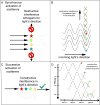Clarifying Tissue Clearing
- PMID: 26186186
- PMCID: PMC4537058
- DOI: 10.1016/j.cell.2015.06.067
Clarifying Tissue Clearing
Abstract
Biological specimens are intrinsically three dimensional; however, because of the obscuring effects of light scatter, imaging deep into a tissue volume is problematic. Although efforts to eliminate the scatter by "clearing" the tissue have been ongoing for over a century, there have been a large number of recent innovations. This Review introduces the physical basis for light scatter in tissue, describes the mechanisms underlying various clearing techniques, and discusses several of the major advances in light microscopy for imaging cleared tissue.
Copyright © 2015 Elsevier Inc. All rights reserved.
Conflict of interest statement
The authors have no conflicts of interest to declare.
Figures


References
-
- Alnuami AA, Zeedi B, Qadri SM, Ashraf SS. Oxyradical-induced GFP damage and loss of fluorescence. International journal of biological macromolecules. 2008;43:182–186. - PubMed
-
- Booth MJ. Adaptive optics in microscopy. Philosophical transactions Series A, Mathematical, physical, and engineering sciences. 2007;365:2829–2843. - PubMed
Publication types
MeSH terms
Grants and funding
LinkOut - more resources
Full Text Sources
Other Literature Sources

